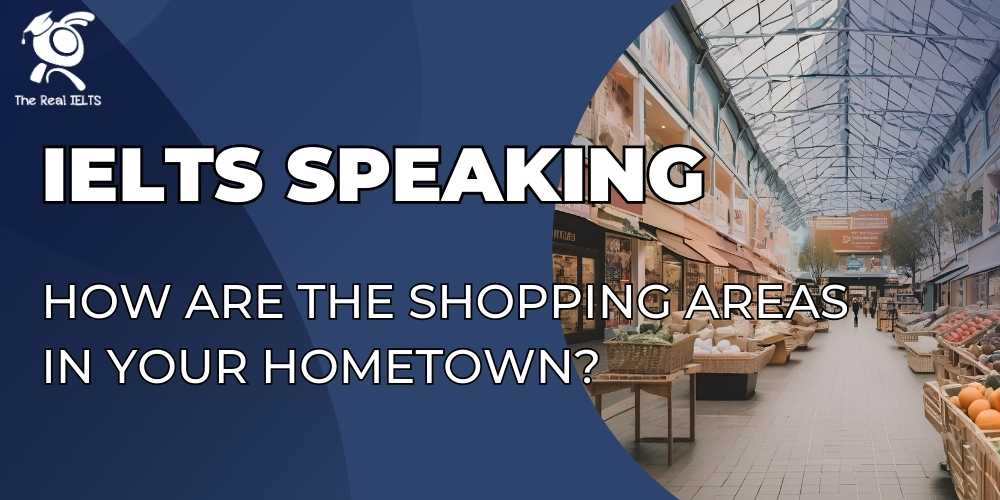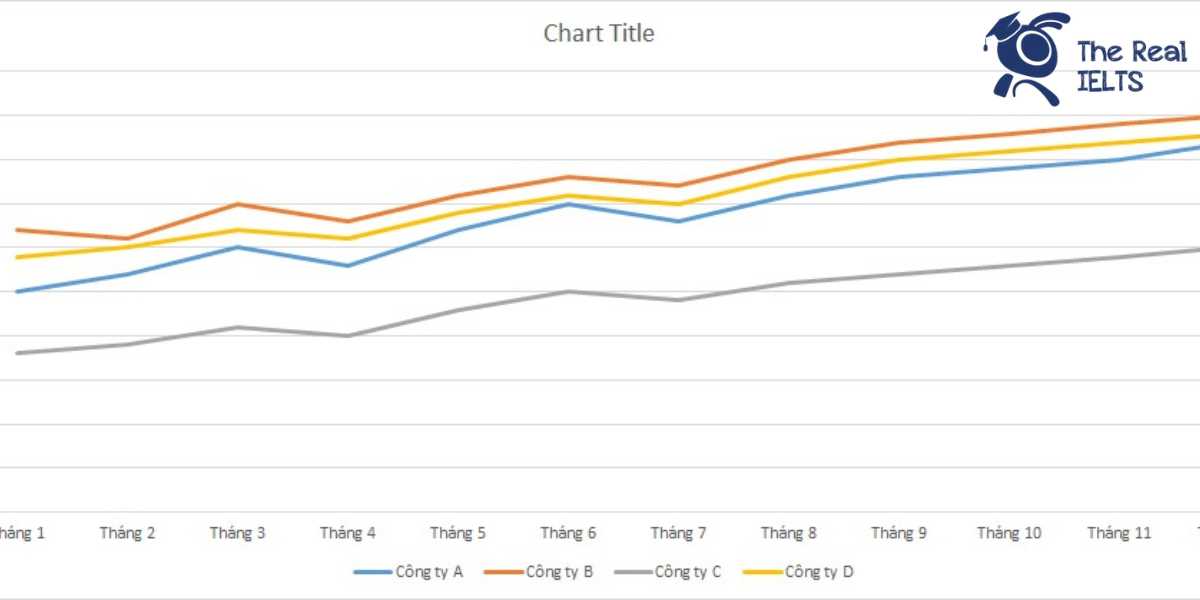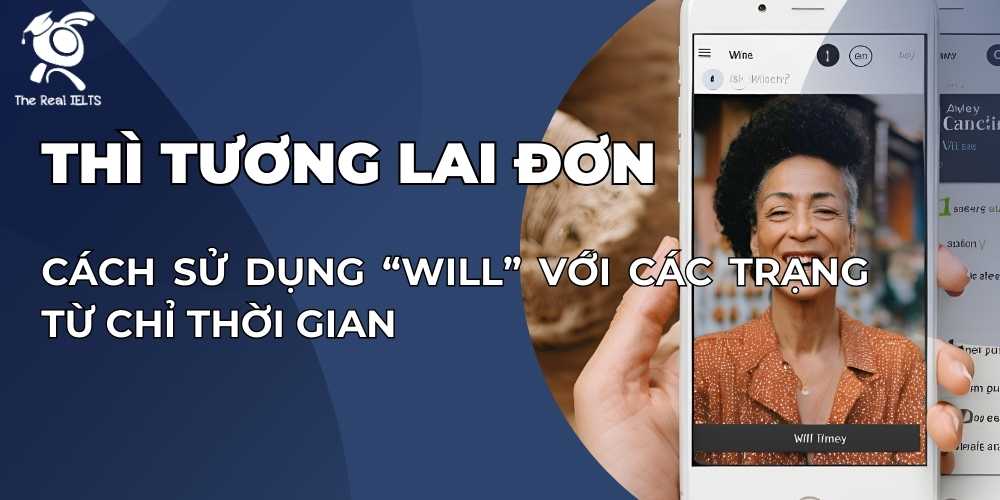Bài viết giúp bạn trả lời câu hỏi về khu mua sắm ở quê hương trong IELTS Speaking. Bạn sẽ học cách mô tả địa điểm, đặc điểm, và trải nghiệm cá nhân một cách chi tiết và sinh động.
Đọc thêm các bài luyện thi IELTS khác.
Đọc thêm câu hỏi khác tại: IELTS Speaking Part 1: Introduction and Interview chủ đề Your hometown.
Đọc thêm IELTS Speaking: Do people in your hometown mostly live in houses or apartments?
Câu trả lời IELTS Speaking: How are the shopping areas in your hometown?
Introduction:
My hometown is Da Nang, a vibrant coastal city located in central Vietnam. It’s a place that holds a special significance to me because of its unique blend of natural beauty, cultural richness, and modern development. One aspect of Da Nang that I find particularly interesting is its shopping areas, which reflect the city’s dynamic character and growing economy.
Geographical Description:
Da Nang is blessed with a stunning geographical setting, nestled between the Han River and the East Sea. The shopping areas are spread across the city, from bustling downtown districts to quieter suburban neighborhoods. Many shopping centers and markets are conveniently located near the river or along the coastline, offering shoppers not only a great retail experience but also breathtaking views.
Cultural Aspects:
The shopping areas in Da Nang are a melting pot of cultures. You’ll find everything from traditional Vietnamese markets, like Han Market, where local vendors sell handmade crafts, spices, and fresh produce, to modern malls like Vincom Plaza, which feature international brands and trendy boutiques. During festivals like Tet (Lunar New Year), the shopping areas come alive with decorations, special sales, and cultural performances, making shopping a festive and memorable experience.
Historical Background:
Da Nang has a rich history as a trading port, and this is reflected in its shopping areas. Han Market, for instance, has been a hub of commerce for decades, offering a glimpse into the city’s past. Additionally, the city’s development as a major economic center in central Vietnam has led to the construction of modern shopping complexes that cater to both locals and tourists.
Economic Activities:
Shopping is a significant part of Da Nang’s economy. The city’s markets and malls support thousands of small businesses and vendors, contributing to the livelihoods of many families. Tourism also plays a role, as visitors flock to shopping areas to buy souvenirs, local specialties like fish sauce and silk, and other unique items. The blend of traditional and modern shopping experiences helps sustain the city’s economic growth.
Personal Connection:
I have many fond memories of shopping in Da Nang. As a child, I often visited Han Market with my mother to buy fresh ingredients for family meals. Now, I enjoy exploring the modern malls with my friends, especially during weekends or holidays. What makes shopping in Da Nang special to me is the sense of community and the variety of options available, from affordable local products to high-end international brands.
Conclusion:
In summary, the shopping areas in Da Nang are diverse, vibrant, and reflective of the city’s unique character. From traditional markets to modern malls, they offer something for everyone. What I love most about shopping in my hometown is the way it combines the old and the new, creating a shopping experience that is both culturally rich and economically dynamic. Whether you’re a local or a visitor, Da Nang’s shopping areas are sure to leave a lasting impression.
Ví dụ 2
Introduction:
My hometown is Hanoi, the capital city of Vietnam, located in the northern part of the country. It’s a place that holds deep significance to me because of its rich history, vibrant culture, and the warmth of its people. One of the aspects I find most fascinating about Hanoi is its shopping areas, which are a perfect blend of tradition and modernity.
Geographical Description:
Hanoi is a city of contrasts, with its shopping areas spread across both the bustling Old Quarter and the more modern districts like Ba Dinh and Cau Giay. The Old Quarter, with its narrow streets and colonial architecture, is home to many traditional markets and small shops. In contrast, areas like Vincom Mega Mall and Lotte Center offer a more contemporary shopping experience with spacious, air-conditioned environments.
Cultural Aspects:
Shopping in Hanoi is deeply intertwined with its culture. The Old Quarter, for example, is famous for its “”36 Streets,”” each named after the specific goods sold there, such as Silk Street, Silver Street, and Bamboo Street. This tradition dates back centuries and reflects Hanoi’s history as a trading hub. Additionally, during festivals like Tet or Mid-Autumn Festival, the shopping areas are adorned with colorful decorations, and vendors sell traditional items like lanterns, mooncakes, and festive clothing.
Historical Background:
Hanoi’s shopping areas have a long and storied history. The Dong Xuan Market, one of the largest and oldest markets in the city, was established in the 19th century and remains a popular destination for both locals and tourists. Over the years, Hanoi has seen the rise of modern shopping centers, but the traditional markets continue to thrive, preserving the city’s historical charm.
Economic Activities:
Shopping is a vital part of Hanoi’s economy. The city’s markets and malls support countless small businesses, artisans, and vendors. The Old Quarter, in particular, is a hub for local crafts and souvenirs, attracting tourists from around the world. Meanwhile, modern shopping centers cater to the growing middle class, offering a wide range of international brands and luxury goods. This blend of traditional and modern shopping experiences helps drive the city’s economic growth.
Personal Connection:
I have countless cherished memories of shopping in Hanoi. As a child, I loved visiting the Night Market with my family, where we would browse through stalls selling everything from clothes to street food. Now, I enjoy exploring the modern malls with my friends, especially during weekends. What makes shopping in Hanoi special to me is the sense of nostalgia and the way it connects me to my roots.
Conclusion:
In conclusion, the shopping areas in Hanoi are a reflection of the city’s unique blend of tradition and modernity. From the historic streets of the Old Quarter to the sleek, contemporary malls, they offer a diverse and enriching shopping experience. What I love most about shopping in my hometown is the way it brings people together and preserves the cultural heritage of Hanoi. Whether you’re looking for traditional crafts or the latest fashion trends, Hanoi’s shopping areas have something for everyone.















